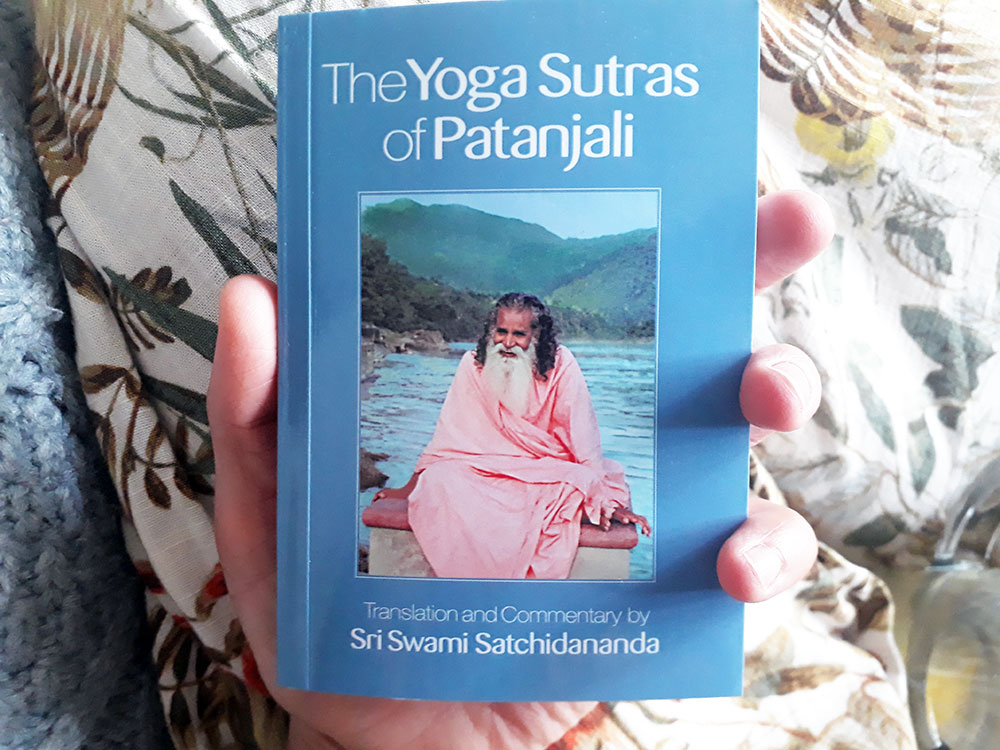
I’ve just finished reading the pocket version of The Yoga Sutras of Patanjali with commentary by Sri Swami Satchidananda. (This is an Amazon affiliate link which means if you buy the book via my link, I will earn a small commission at no cost to you.)
If you’re unfamiliar with the Yoga Sutras, they’re essentially a collection of 196 discourses or words of wisdom named sutras, which have been divided up between four chapters or books. Collectively, these four books make up the Yoga Sutras of Patanjali.
I’m a big fan of the pocket book, as you can easily go back to it and reflect on individual sutras. I think it’s in the pocket version introduction, that you’re given the advice to consume the Yoga Sutras slowly.
I’d previously read the version with commentary by Chip Hartranft back in 2014 and I remember reading the book in less than a week. It wasn’t really long enough to retain or embody the wisdom.What I like about the pocket book I’ve just read is that there are fewer commentaries on each sutra. Some of the Sutras have explanations and some don’t. This makes it much more accessible to dip in and out of.
Applying the Yoga Sutras in Everyday Life
One of my yoga teachers in India said that you could take just a fraction of yoga philosophy such as one individual sutra and reflect on it for a month. You’ll probably learn a lot more from spending a long time with just a few sutras rather than binge reading the whole book in a short amount of time and never doing anything with it.
Two Important Yoga Sutras
Here are two Sutras I highlighted that could be put into practice straight away for anyone – -whether you have a yoga practice or not.
Book 1 | Sutra 33
By cultivating attitudes of friendliness toward the happy, compassion for the unhappy, delight in the virtuous, and disregard toward the wicked, the mind-stuff retains its undisturbed calmness
In the commentary, Swami Satchidananda mentions that even if you plan to ignore yoga entirely, remember this one sutra. He goes on to say that “this sutra became my guiding light to keep my mind serene always”.
Book 2 | Sutra 33
When disturbed by negative thoughts, opposite (positive) ones should be thought of. This is pratipaksha bhavana
I highlighted this sutra because it’s as relevant to today (if not more so) than it was when Patanjali first wrote it. This advice is often echoed by Hypnotherapists too as way to control the mind and change limiting beliefs.
In the practice of yoga nidra and the iRest dyad or co meditation practice, you are also invited to observe opposite thoughts, emotions and sensations. Just observing the opposite is interesting in itself.
What do the Yoga Sutras say about meditation?
This could be a whole article in itself, but for the purpose of this post, I’m going to keep it brief. But I will say that one of the reasons I believe yoga is so popular and remains so accessible is that it can be practised alongside other practices, belief systems or religions. In the pocket version I’ve just read, Satchidananda says
“Many people ask, ‘On what should I meditate? Where should I get initiation? Is there just one way to meditate?’ Here Patanjali clearly says ‘No, you can meditate on anything that will elevate you.”
There are suggestions throughout the Yoga Sutras, but I love the freedom to be able to choose. It is, however, recommended that when you choose a meditation practice, you stick to that one practice.
